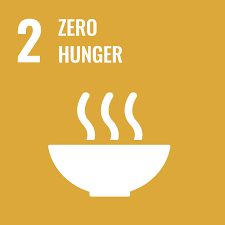Key Points
Worldwide, poor diet quality is associated with noncommunicable disease morbidity and mortality; early childhood education and care (ECEC) settings can serve as important places to encourage children to engage in healthy behaviors, including healthy eating.
This Cochrane Review examined evidence for effectiveness of healthy eating interventions delivered in ECEC settings for improving child dietary quality and health.
Findings of the systematic review indicate that ECEC-based healthy eating interventions may improve child diet quality slightly, potentially increasing fruit consumption, and may have favorable effects on child weight and risk of being overweight or obese. However, the authors caution that the certainty of evidence is moderate to very low because of considerable heterogeneity, potential publication bias, and high/unclear risks of bias.
The commentary elaborates upon the conclusions of the Cochrane Review authors and suggests that future trials examine the impact of specific intervention components and focus on populations in low- and lower-middle-income countries.
Background
This paper summarizes the published Cochrane Review, “Healthy Eating Interventions Delivered in Early Childhood Education and Care Settings for Improving the Diet of Children Aged Six Months to Six Years,” by S. L. Yoong, M. Lum, L. Wolfenden, J. Jackson, C. Barnes, A. E. Hall, S. McCrabb, N. Pearson, C. Lane, J. Z. Jones, E. Nolan, L. Dinour, T. McDonnell, D. Booth, and A. Grady (Yoong et al., 2023).1
Worldwide, poor diet quality is associated with a wide range of noncommunicable disease morbidity and mortality. In 2017, 255 million disability-adjusted life-years and 11 million deaths among adults were attributed to dietary risk factors, including high intake of sodium and low intake of whole grains and fruits (Afshin et al., 2019). Although many factors influence dietary choices and quality (e.g., physical environment, culture, knowledge, preferences, physiological needs [Chen & Antonelli, 2020]), studies have shown that dietary patterns established in childhood persist into adulthood and can affect health and development (Koning et al., 2016; Mikkilä et al., 2005; Movassagh et al., 2017; Shrestha & Copenhaver, 2015).
Early childhood education and care (ECEC) settings have been identified as key places to encourage children to engage in healthy behaviors, including healthy eating (Centers for Disease Control and Prevention, 2023; World Health Organization, 2012). Estimates on ECEC participation rates range from 21% in low-income countries to 79% in high-income countries, with an average participation rate of 54% globally (McCoy et al., 2021).
This Cochrane Review examined the evidence for effectiveness of healthy eating interventions delivered in ECEC settings for improving child dietary quality and health. It focused on children aged 6 months to 6 years. Yoong and colleagues rated the quality of evidence for dietary, cost, and adverse outcomes using the Grading of Recommendations, Assessment, Development and Evaluation (GRADE) system, concluding that the certainty of evidence ranged from very low (diet quality, vegetable consumption, cost-effectiveness, adverse consequences) to moderate (fruit consumption, noncore foods, sugar-sweetened beverage consumption).
We conducted a dual appraisal of the quality of the systematic review using AMSTAR 2 (A MeaSurement Tool to Assess systematic Reviews) and concluded that we had high confidence in the Cochrane Review.
Methods
The study population for this Cochrane Review included children aged between 6 months and 6 years attending ECEC services. Parents, guardians, and ECEC staff were also included if they were targeted as part of the intervention. The types of included interventions were healthy eating interventions delivered within an ECEC setting to encourage healthy eating for children. To be eligible, interventions had to have at least one component from the World Health Organization Health Promoting Schools’ Framework that targeted child diet in the ECEC setting: health curriculum; ethos and environment of schools (e.g., food availability, nutrition policies, menu modifications, training for staff); and partnerships/engagement with health care, community, or families. ECEC settings were defined as paid or government-subsidized services such as preschools, kindergartens, nurseries, and family day care homes. The review included comparators of no intervention, delayed intervention, usual care, or alternative intervention that did not directly address child diet. The primary outcome of the review was dietary outcomes. Secondary outcomes were anthropometric outcomes, language and cognitive performance, social/emotional outcomes, quality of life, and cost. Studies had to have follow-up data collected at least 3 months after baseline to be included.
Search Methodology
The Cochrane Review authors searched for randomized controlled trials (RCTs) of relevant ECEC-based healthy eating interventions in multiple medical literature databases, clinical trial websites, and reference lists of included studies and relevant systematic reviews. The search was conducted in February 2022; there was no language or time restriction on the search strategy.
Main Results
The review included 52 RCTs reported in 96 publications. The studies examined 58 interventions, of which 43 focused on curriculum, 56 focused on ethos and environment, 50 focused on partnerships, and 37 targeted all three components (the number of interventions that targeted all three components is inconsistently reported in the Cochrane Review). While all interventions were based in the ECEC setting, 22 studies also involved the home setting. Most included studies took place in the United States (n = 20), Australia (n = 6), Israel (n = 4), and the United Kingdom (n = 3). The remaining took place in Belgium, Germany, the Netherlands, and Norway (n = 2 each) and Greece, Spain, Colombia, China, Italy, Turkey, Canada, Switzerland, Finland, and Mexico (n = 1 each). One was a multicountry study that took place in Belgium, Bulgaria, Germany, Greece, Poland, and Spain. The review included 29 studies that were considered large (400 or more children) and 23 that were small (fewer than 400 children). The total number of randomized children is at least 36,312 (3 studies only provided the number who participated or who contributed outcome data, and 1 study included no information on the number of children who participated). In this summary, we report on primary outcomes and some secondary outcomes, including physical outcomes and outcomes included in the main summary of findings.
Primary Outcomes: Dietary Intake
Diet Quality
This review included six RCTs that reported on measure of overall diet quality (all diet quality outcomes were converted to the Healthy Eating Index). In a meta-analysis of all six studies (n = 1,973 children), the review found that ECEC-based healthy eating interventions may positively affect child diet quality compared with usual practice or no intervention (standardized mean difference [SMD]: 0.34; 95% confidence interval [CI]: 0.04 to 0.65). Authors deemed the certainty of evidence as very low due to high risk of bias in three studies, high heterogeneity between studies, and publication bias. When conducting a sensitivity analysis excluding the three studies at high risk of bias, the effect size was smaller, and results were not statistically significant (SMD: 0.21; 91% CI: -0.03 to 0.45).
Fruit Consumption
This review included 18 RCTs that examined fruit consumption, with 15 studies reporting results on servings/portions, number of times consumed, or weight of fruit consumption. A meta-analysis of 11 of these studies (n = 2,901 children) found that ECEC-based healthy eating interventions likely increase fruit consumption slightly (SMD: 0.11; 95% CI: 0.04 to 0.18). A SMD of 0.11 corresponds to an increase of 0.13 servings of fruit, or 20% of the daily fruit requirements for this age group while in care. Certainty in this finding was downgraded to moderate due to high risk of bias in seven studies. When conducting a sensitivity analysis excluding the studies at high risk of bias, the pooled effect was no longer statistically significant, and the effect size was reduced.
Vegetable Consumption
This review included 21 RCTs that examined vegetable consumption, with 17 studies reporting results on servings/portions or weight of vegetable consumption. In a meta-analysis of 13 of these studies (n = 3,335 children), the review found a small increase in vegetable consumption in ECEC-based healthy eating interventions in comparison with usual practice/no-intervention control (SMD: 0.12; 95% CI: -0.01 to 0.25). However, the authors deemed the results of very low certainty because of high overall risk of bias, heterogeneity, and potential publication bias of the studies. When excluding studies at high risk of bias, the effect size was reduced (SMD: 0.06; 95% CI: -0.05 to 0.17).
Fruit and Vegetable Consumption
This review included six RCTs that examined fruit and vegetable consumption combined. In a meta-analysis of four of these studies (n = 1,547 children), the review found no evidence of an increase in fruit and vegetable consumption in healthy eating interventions in comparison with usual practice (SMD: 0.05; 95% CI: -0.05 to 0.15). When excluding two studies at high risk of bias, the effect size increased (SMD: 0.08; 95% CI: -0.05 to 0.21). The review did not report certainty of evidence for this outcome.
Noncore Foods Consumption
This review included 11 RCTs that reported on consumption of noncore foods (i.e., less healthy/discretionary), including foods or beverages high in salt, processed meats, and sugar-sweetened beverages. Of these 11 studies, 8 reported results on servings/portions or weight of noncore foods. A meta-analysis of 7 of these studies (n = 1,369 children) found that ECEC-based healthy eating interventions likely result in little to no difference in noncore food consumption (SMD: -0.05; 95% CI: -0.17 to 0.08). Review authors lowered certainty in the evidence to moderate due to high risk of bias in 5 studies. When excluding studies at high risk of bias, the pooled effect was higher, indicating higher consumption of noncore foods, but this only included 2 studies.
Sugar-Sweetened Beverage Consumption
This review included seven RCTs that examined consumption of sugar-sweetened beverages. A meta-analysis of three studies (n = 522 children) found that the ECEC-based healthy eating interventions probably result in little to no difference in servings or portions of sugar-sweetened beverages consumed (SMD: -0.10, 95% CI: -0.34 to 0.14). The authors lowered certainty in the results to moderate due to high risk of bias in two studies.
Secondary Outcomes
Body Mass Index (BMI)
This review included 17 RCTs that measured child BMI as an outcome measure. In a meta-analysis of 15 of these studies (n = 3,932 children), the review found that ECEC-based healthy eating interventions may result in little to no difference in child BMI in comparison with usual practice (mean difference [MD]: -0.08; 95% CI: -0.23 to 0.07). The authors deemed the results to be of low certainty due to heterogeneity and potential publication bias, although no studies were considered high risk of bias.
BMI z-Score
This review included 20 RCTs that reported BMI z-scores, with 19 studies reporting on BMI z-scores and 1 study reporting on annual changes in BMI z-score. In a meta-analysis of 17 of these studies (n = 4,766 children), the review found that ECEC-based healthy eating interventions may result in little to no difference in child BMI z-scores in comparison with usual practice (MD: -0.03; 95% CI: -0.09 to 0.03). The authors deemed the results to be of high certainty. When excluding studies at high risk of bias, the effect size was reduced (MD: -0.01; 95% CI: -0.08 to 0.06).
Absolute Weight (kg)
This review included nine RCTs that measured weight as an outcome of ECEC-based healthy eating interventions. A meta-analysis of the nine RCTs (n = 2,071 children) found with high certainty that children who received the healthy eating interventions had lower weight by 0.23 kg (95% CI: -0.49 to 0.03).
Overweight and Obesity
This review included five RCTs that reported on number of children with overweight or obesity as an outcome. In a meta-analysis of the five studies (n = 1,070 children), the review found with high certainty that children receiving the intervention had a reduced risk for overweight or obesity (risk ratio [RR]: 0.81; 95% CI: 0.65 to 1.01).
Waist Circumference
This review included three RCTs that reported waist circumference as an outcome of ECEC-based healthy eating interventions. In a meta-analysis of two of these studies (n = 838 children), the review found a reduction in waist circumference in ECEC-based healthy eating interventions in comparison with usual practice (MD: -0.82 cm; 95% CI: -1.35 to -0.29). However, due to the small number of studies, the evidence is highly uncertain. The third study also reported a favorable effect of the intervention on waist circumference but could not be included in the meta-analysis because the study did not provide a sample.
Cost
This review included six RCTs that reported on costs of the healthy eating interventions as determined by various methods, including surveys and records. The review found that although ECEC-based healthy eating interventions may be cost-effective, the evidence is very uncertain due to heterogeneity, indirectness, imprecision, and publication bias.
Adverse Outcomes
This review included three RCTs that examined adverse consequences as reported by staff. None of these studies reported a higher number of adverse events (e.g., parent complaints, incidents) from participating in the intervention. The review determined that the evidence that healthy eating interventions have little to no effect on adverse outcomes is very uncertain due to indirectness, imprecision, and publication bias.
Subgroup Results
When possible, review authors examined results by subgroups, including looking at studies that were undertaken specifically with low or high/unclear socioeconomic status populations and studies that targeted curriculum strategies as part of the intervention.
Review authors conducted subgroup analyses focused on socioeconomic status for the following outcomes: diet quality, fruit consumption, vegetable consumption, BMI, BMI z-score, absolute weight, and overweight/obesity. Vegetable consumption was the only outcome with a statistically significant subgroup analysis finding. For vegetable consumption, a subgroup analysis was conducted on four studies specifically with low-socioeconomic status populations (n = 717 children) and found a pooled effect of SMD -0.04 (95% CI: -0.19 to 0.11) when compared with nine studies with high socioeconomic status populations (n = 2,618 children) with a pooled effect of SMD 0.19 (95% CI: 0.03 to 0.35). This subgroup analysis indicates that the effect of ECEC-based healthy eating interventions for vegetable consumption may be higher in high socioeconomic status than in low socioeconomic status populations (P = 0.04).
Review authors also conducted subgroup analyses focused on targeted curriculum strategies for the following outcomes: diet quality, fruit consumption, vegetable consumption, noncore foods consumption, BMI, and BMI z-score. They did not find any statistically significant results for these subgroup analyses.
Cochrane Review Authors’ Conclusions
The review concludes that ECEC-based healthy eating interventions may improve child diet quality slightly, potentially increasing fruit consumption (moderate-certainty evidence) and may have favorable effects on child weight (high-certainty evidence) and risk of being overweight or obese (moderate-certainty evidence). Overall, the review supports healthy eating interventions delivered in ECEC settings on several outcome measures; however, the authors caution that the certainty of evidence is moderate to very low because of considerable heterogeneity, potential publication bias, and high/unclear risks of bias. The review recommends that practitioners prioritize the delivery of multicomponent healthy eating interventions, including interventions that target the curriculum, ethos and environment, and partnerships with the community and parents.
The authors discuss the limitations of the research in terms of variability in how healthy eating programs were conducted, delivered, and assessed. There were often missing follow-up data that limited the meta-analysis results. Furthermore, the authors noted the potential for social desirability bias because many of the individuals receiving the interventions were aware they were being assessed. The review recommends that future research should examine the impact of specific intervention components because little is known about the characteristics of the intervention that may have influenced the outcomes. The authors also note an absence of research in the following areas: (1) no studies in their review were from low- and lower-middle-income countries, (2) only one RCT examined children aged between 6 months and 2 years; and (3) only two RCTs were conducted in family day care settings, indicating that future work is needed in these areas. The authors also suggest that future studies should examine cost-effectiveness and potential adverse outcomes of ECEC-based healthy eating interventions to maximize impact of interventions.
Commentary: Implications of the Cochrane Evidence for Policy and Practice
Conclusions from this Cochrane Review suggest that healthy eating interventions in ECEC settings can have a positive influence on children. Although the certainty of evidence ranged from moderate to very low, the conclusions underscore the importance of the ECEC setting for fostering lifelong healthy eating behaviors, knowledge, and self-efficacy in addition to encouraging other healthy habits among young children. Ongoing and past research at RTI provides context for the policy relevance of the Cochrane Review for family well-being, implementation, and equity.
RTI recently contributed to a systematic review on the role of ECEC center attendance on child health, growth, and development in low- and middle-income countries for children under 3 years of age (Behbehani et al., 2024). Although this population was a subset of the population of 6 months to 6 years included in the Cochrane Review, the RTI review generally found positive associations between attendance and children’s growth and nutrition (i.e., growth, breastfeeding) and development (i.e., neurodevelopment, adult-child interactions, physical activity) but negative associations with children’s health (i.e., fluid in inner ear, gastrointestinal health, respiratory illnesses). The RTI review suggested this negative association with health may be due to increased risk of infections from ECEC center attendance. However, the review also noted that ECEC programs can provide nurturing care for young children, thus impacting mothers’ workforce participation. Although the impact of ECEC programs on parents’ ability to participate in the workforce was outside the scope of the Cochrane Review, this conclusion from the RTI review indicates that there are likely additional benefits from robust ECEC programming for both children and families that were not directly measured in the Cochrane Review.
Although many countries are increasing support for ECEC programs, they can face challenges while implementing healthy eating and other interventions. Administrative burden and lack of sufficient incentives to motivate change among ECEC providers often make implementation difficult. Recent research at RTI examined Washington DC’s Healthy Tots Act, a fiscally supported farm–to–early care and education policy that supports ECEC facilities’ ability to offer wellness programs and serve nutritious meals, including offering a local incentive procurement component (“Local5”) (Stephens et al., 2021). The research found that while the program brought together organizations and entities across the food sector to serve local food to 697 children across 36 ECEC sites, the 5-cent incentive provided to ECEC facilities for each lunch or supper served with local foods was insufficient to change purchasing behavior substantively or to cover the cost of food or staff time for the administrative reporting process. Furthermore, funding for the program did not include monitoring or evaluation, making it difficult to determine the impact of the Healthy Tots Act on children without additional funding being procured. In addition to including language and funding in the policy/legislation for evaluation, the study recommends prioritizing relationships with third-party aggregators and implementation partners in the community to provide the necessary capacity to facilitate local food purchasing and build more robust community food systems across ECECs and producers. The study also recommends building in support for opportunities for families to engage with the community. These recommendations are consistent with the review’s suggestions to prioritize partnerships with the community and parents.
A commentary led by RTI noted additional recommendations for developing more impactful and equitable policies around state and local food procurement incentive programs for ECECs and schools (Giombi & Stephens, 2022). These recommendations included (1) establishing partnerships with universities and others to support evaluation planning, implementation, and/or data collection; (2) identifying populations of potential impacts and outcome measures before implementation to inform data collection for evaluation; and (3) developing easy-to-use, but mandatory, reporting systems for ECECs receiving funding for the program. Although many interventions included in the Cochrane Review used partnerships as part of program implementation, there is limited information provided on the extent to which they identified populations of potential impacts and outcome measures before implementation and developed mandatory reporting systems. Following these recommendations will inform and drive more impactful and equitable ECEC healthy eating interventions.
Commentary: Implications of the Cochrane Evidence for Research
One key limitation that the Cochrane Review authors note is the lack of relevant RCTs conducted in low- and lower-middle-income countries. RTI recently conducted a randomized trial in Anganwadi preschools in India that trained teachers and aides to add micronutrients into the midday meal of children (Black et al., 2021). The RTI trial found that the micronutrients effectively reduced anemia and iron deficiency. In low-quality schools, the micronutrients advanced children’s language, inhibitory control, and social-emotional development, illustrating the benefits of high-quality nutrition on child development in a variety of settings. The impact of this trial was positive but modest; study authors suggest that intervention trials that incorporate nutrition, along with other components such as learning, may have a higher likelihood of impacting childhood development compared with single-component trials. This finding is consistent with the Cochrane Review recommendation that practitioners prioritize the delivery of multicomponent healthy eating interventions, with nearly two-thirds of included interventions targeting all three of the Health Promoting Schools’ components (health curriculum; ethos and environment of schools; and partnerships/engagement with health care, community, or families). Subgroup analyses conducted in the Cochrane Review with the few studies that isolated the strategies did not reveal any effects, limiting the ability to make conclusions about the individual components. However, it can be challenging to implement multicomponent healthy eating programs in ECEC settings. Further research examining the impact of specific intervention components may still be beneficial for determining which components are most effective or whether there are any demonstrated benefits from less complex strategies. Implementation of a single-component intervention may be easier, thus offering a more practical strategy for improving young children’s dietary intake.
Further, RTI is currently contributing to one ongoing study cited in the Cochrane Review, CHAMP (Creating Healthy Habits Among Maryland Preschools), a nutrition and physical activity promotion trial in childcare centers serving low-income communities. Preliminary results show that trial effects were moderated by baseline environment quality of the centers as measured by a validated observation tool (Environment and Policy Assessment and Observation). Centers with higher nutrition and physical activity environmental quality supported the intervention’s ability to increase moderate vigorous physical activity, willingness to try new foods, and BMI. The Cochrane Review did not include physical activity or willingness to try new foods in its outcomes, although it did find that ECEC-based healthy eating interventions likely increase fruit consumption slightly. For BMI, the Cochrane Review found that healthy eating interventions may result in little to no difference. Further research into the effects of existing physical activity and nutrition environments of ECEC centers may be useful to understand effects of healthy eating interventions within those environments (Kowalski et al., 2023).
Conclusions
ECEC-based healthy eating interventions may improve child diet quality slightly, potentially increasing fruit consumption, and may have favorable effects on child weight and risk of being overweight or obese. Overall, the Cochrane Review supports healthy eating interventions delivered in ECEC settings on several outcome measures. Future research should examine the impact of specific intervention components as well as ECEC center characteristics and how they influence outcomes.





